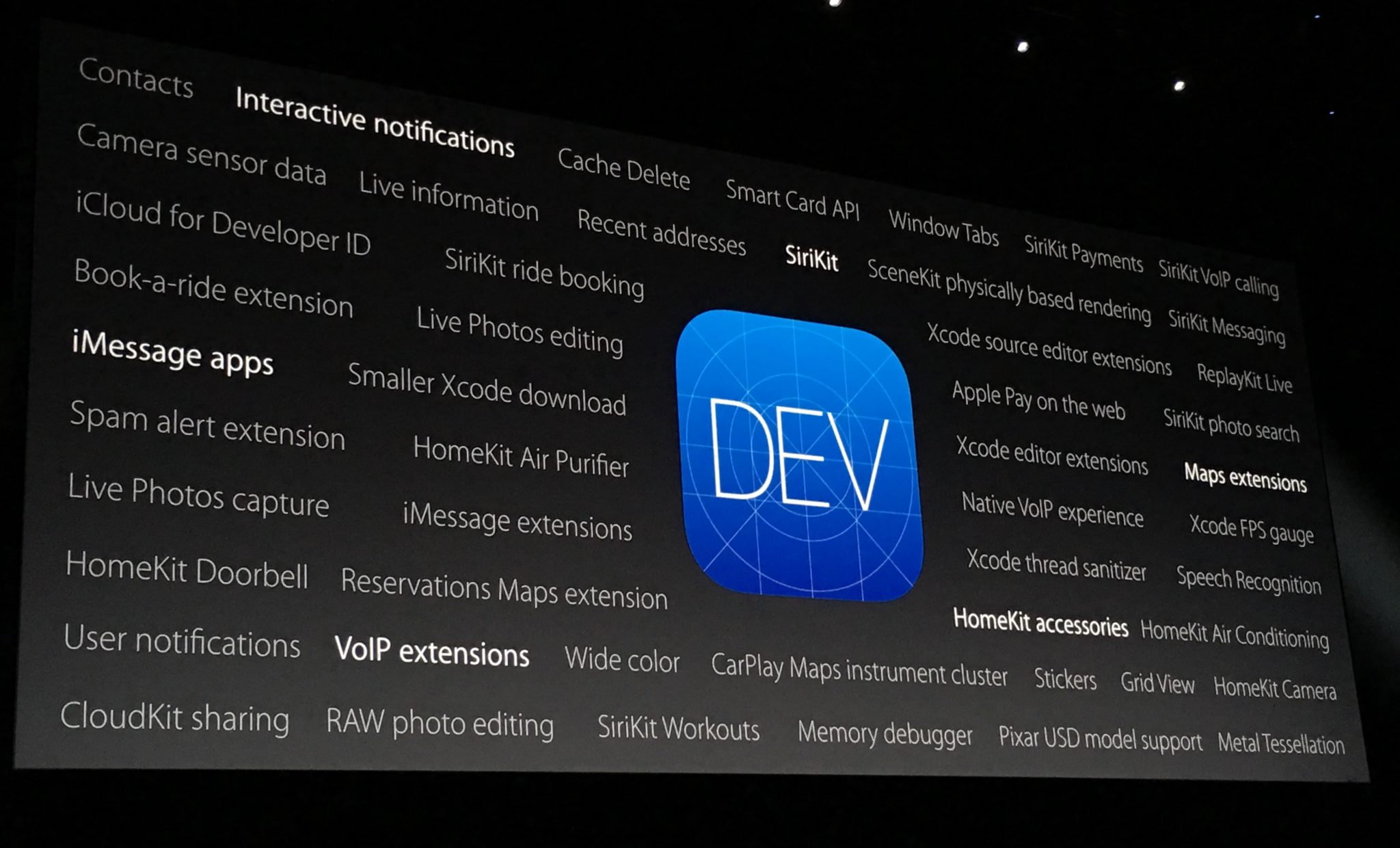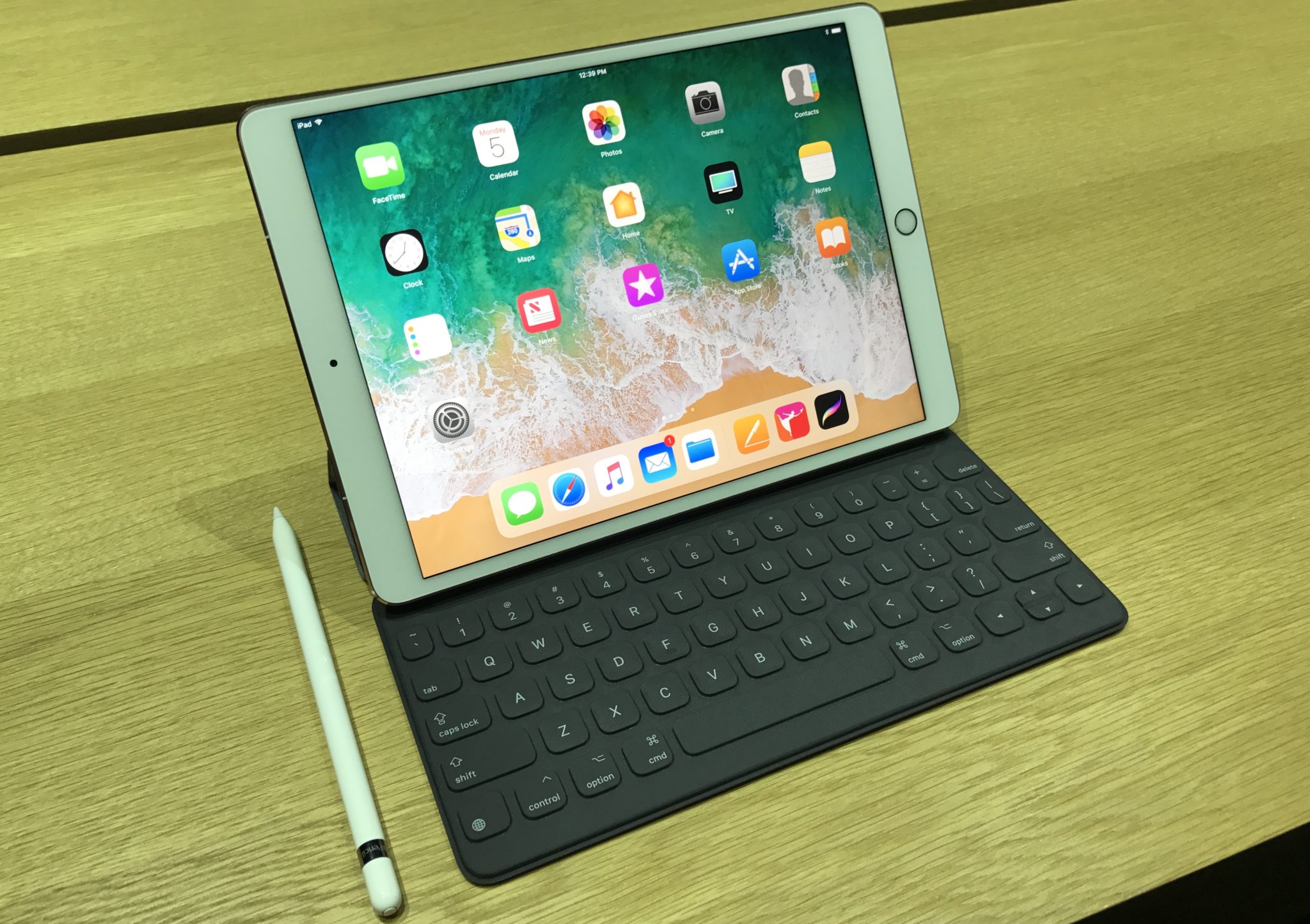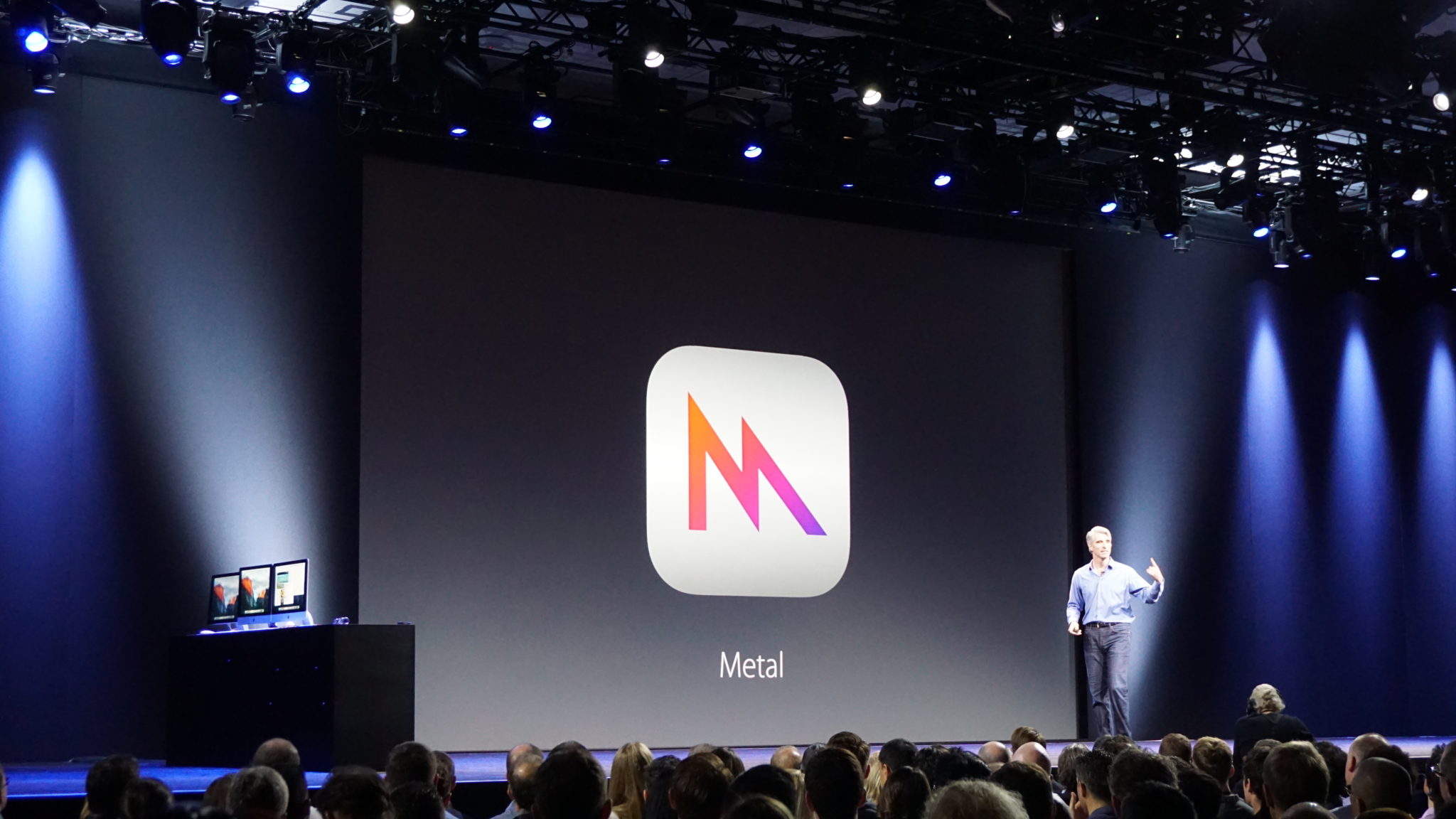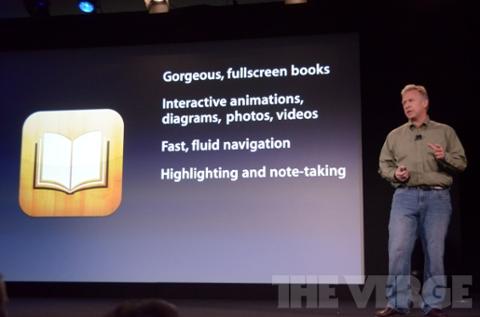 Apple WWDC 2015[/caption] Apple is reportedly set to allow apps for its two major platforms, iOS and macOS, to be compatible across platforms. If this report is accurate, it represents a sea change for Apple’s ecosystem. Bloomberg says that, “as early as next year,” developers will be able to write an app that works natively on iPhones, iPads and Mac computers. They will be able to support both touch interface for mobile and touchpad gestures for the desktop. The change, codenamed “Marzipan,” may roll out next autumn, with an announcement as early as WWDC:
Apple WWDC 2015[/caption] Apple is reportedly set to allow apps for its two major platforms, iOS and macOS, to be compatible across platforms. If this report is accurate, it represents a sea change for Apple’s ecosystem. Bloomberg says that, “as early as next year,” developers will be able to write an app that works natively on iPhones, iPads and Mac computers. They will be able to support both touch interface for mobile and touchpad gestures for the desktop. The change, codenamed “Marzipan,” may roll out next autumn, with an announcement as early as WWDC:
Apple currently plans to begin rolling out the change as part of next fall’s major iOS and macOS updates, said the people, who requested anonymity to discuss an internal matter. The secret project, codenamed “Marzipan,” is one of the tentpole additions for next year’s Apple software road map. Theoretically, the plan could be announced as early as the summer at the company’s annual developers conference if the late 2018 release plan remains on track.The report also notes “Apple’s plans are still fluid,” and “the implementation could change or the project could still be canceled.” [caption id="attachment_139435" align="aligncenter" width="2048"]
 Developers can make more on iOS[/caption]
Developers can make more on iOS[/caption]
The Good
Users will find more to like about the Mac lineup should universal apps make an appearance; a longstanding complaint amongst users is their favorite mobile apps aren’t available for the desktop. When they are, it’s often with an additional fee (because they’re separate apps, of course). Developers will be able to write just one app and seamlessly support various platforms. It’s not quite a realization of the ‘write once, deploy everywhere’ pipe dream, but it will help developers create experiences that meet customers' needs wherever they go within Apple’s ecosystem. It’s also not the same error Microsoft and Google made with their attempts at cross-platform apps. Universal Windows apps were a move to reboot the Windows platform, and more about making desktop apps available for the then-burgeoning (and now dead) Windows Mobile platform. Google’s effort to bring Android apps to Chrome OS was a stopgap; native apps are always more powerful than web apps, and leaning into the web is Chrome OS’s gift and curse.Apple's move could even mean the end to AppKit, the macOS framework that has hit its ceiling. If UIKit comes to the desktop, it opens up a lot of possibilities. [caption id="attachment_142098" align="aligncenter" width="2048"]Today, Apple invented UWP apps. Psyched!
— Paul Thurrott (@thurrott) December 20, 2017
 iPad Pro 10.5-inch[/caption]
iPad Pro 10.5-inch[/caption]
The Bad
If Apple is indeed working on universal apps, it could end up both enriching and cheapening macOS. Great for developers, but still a limiting proposition. A successful cross-platform offering, CARROT Weather, cleverly made itself at home in the macOS menu bar; it doesn’t have a big, bright native macOS app to speak of. But others may not be so wise. Unless Apple makes it impossible to allow apps to scale, some developers will simply try to expand their apps to the full 27-inch (or larger; 27-inch is just the largest ‘official’ Mac screen) experience. I’m not convinced I want my fun little currency calculator taking up my entire screen. This could bring changes to the app subscription model. Your favorite note-taking app could cost you $2.99 per month on iOS, but another $9.99 for iPad, and $24.99 for the Mac. Some apps are already experimenting with a cross-platform model of some sort; at WWDC, I spoke with the team behind Bear, which told me the app is designed to cater to ‘power users’ more than casual ones.A unified App Store sounds sensational, but it could also be a lead zeppelin. If anything, it will probably look more like Apple cherry-picking Mac apps to include in the iOS App Store. Considering the state of affairs with the Mac App Store, Apple may also demand universal support from apps there, or ask those developers not interested in cross-platform apps to re-submit as a means of weeding out ‘zombie apps.’ [caption id="attachment_137468" align="aligncenter" width="2048"]It’s great for developers, too. This isn’t about app prices.
It makes Mac apps economical for iOS developers to make. It’s the difference between a rich, modern Mac-app ecosystem, or a lot of potential Mac apps not existing at all or being relegated to shitty web/Electron apps. https://t.co/uEnmd2c5pK — Marco Arment (@marcoarment) December 20, 2017
 Swift[/caption]
Swift[/caption]
The Ugly
A universal app ecosystem further blurs the line between Mac and iOS hardware. We’ve seen it happen here and there already; powerful desktop apps such as Kaleidoscope are now available for the iPad Pro, for better or worse. Others, like Pixelmator, make a point to write both desktop and mobile apps – but would users really want all the prowess of a Pixelmator on an iPad? More to the point, would a full-fledged Pixelmator for mobile be limited to the (huge) 12.9-inch iPad? Apple has already made such a move:It brings up other considerations, such as how unified apps would handle menus. Macs have a menu bar to make functionality a bit more generalized; iOS apps don’t. There’s not even a unified way to handle mobile app menu functionality. We can’t know if this is specific to new apps, either. AppKit and UIKit are disparate. Apple would undoubtedly fall back on UIKit and deprecate AppKit, which means existing Mac apps would never work on mobile; developers would have to re-write apps. This may also require new hardware. Macs use Intel CPUs, and iOS devices are ARM-based. There are indications that Apple is creating its own bespoke chipsets for both iOS and the Mac, which would solve the conundrum of how mobile apps would easily support desktop architecture. [caption id="attachment_140985" align="aligncenter" width="2048"]I do worry that in the transition to 'universal' apps we'll loose functionality that currently exists on the Mac side. The infamous example of Apple's own Keynote app, where the Mac app lost a bunch of functionality to harmonise it with the iOS version, seems like a warning shot.
— Alasdair Allan (@aallan) December 20, 2017
 Apple Metal WWDC 2015[/caption]
Apple Metal WWDC 2015[/caption]
The Great Unknown
Developer Twitter is ripe with low-hanging fruit about this potential shift. As a concept, it’s both easy to grasp while being impossible to figure out for sure how things will look. An example:For now, we’ll keep in mind this is a rumor. While its source has a great track record, it’s nonetheless speculation until Apple announces otherwise. Until WWDC rolls around and Craig Federighi makes some splashy on-stage pronouncement that apps will be universal starting later in 2018, we’re skeptical. Developers should also consider whether a unified platform is a net positive. Inherent advantages exist for both iOS and macOS. Uniting the user experience across platforms may not work for many apps. But we should recognize this idea has legs. Underlying technologies like iCloud sync work well, and Apple has made much of its framework – like Metal – ubiquitous. Siri is also available on all Apple hardware. In addition, Apple has focused on the app review process and making the iOS App Store much nicer. If this rumor comes to pass, the transition will be interesting; and the end result, after years of refinement on many levels, may actually be wonderful.Sharing an app platform raises all sorts of interesting Qs for various apps. Take Files & Finder — will those eventually merge? If they don't, Files will still need to evolve to be closer to Finder on its own anyway. Just because apps can be shared doesn't mean they'll have to be
— Steve Troughton-Smith (@stroughtonsmith) December 20, 2017


